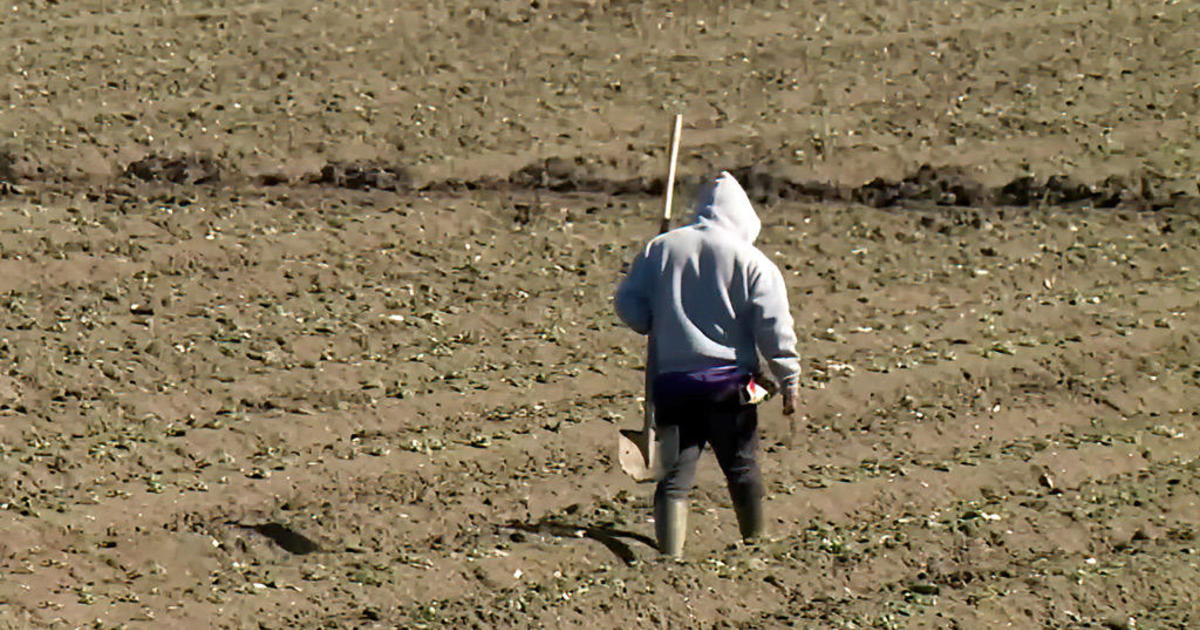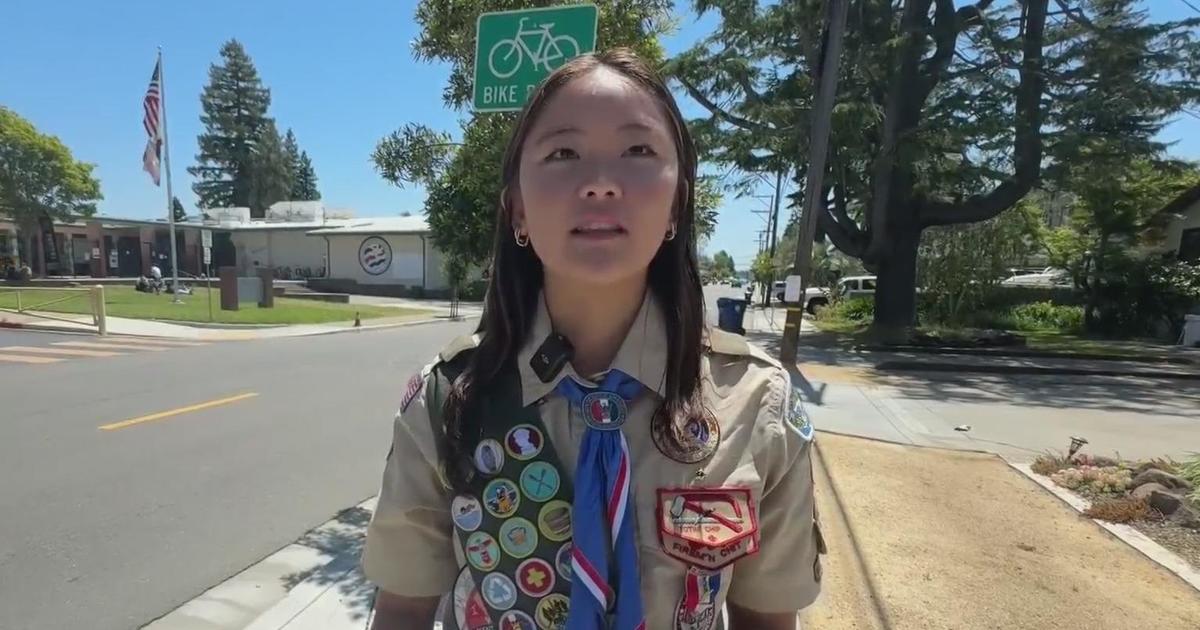COVID Housing: $47M In Assistance Coming To San Mateo Renters, Landlords
SAN MATEO COUNTY (BCN) – Between state and federal funds, almost $47 million in rental assistance will be available to provide San Mateo County renters and landlords impacted by the COVID-19 pandemic much-needed relief in the coming months.
San Mateo County's rental relief allocation -- which includes $22.8 million from the federal Emergency Rental Assistance Program and $24.5 million from state funds -- will be administered via the Local Initiatives Support Corporation, a national nonprofit enlisted by the state to administer rental assistance. The exact timeline and process for applying for assistance is yet to be established.
The Board of Supervisors voted Tuesday to transfer most of the money to the state's housing department and use 1.5% of the federal funds for local outreach.
Even before this injection of funding, the county had been providing rental assistance via its core agencies, such as local nonprofit organization Samaritan House. Since the start of the pandemic, the demand for rent relief has been high, according to Samaritan House CEO Bart Charlow.
"The amount of need is so extraordinary, we have yet to find the depth of it," Charlow said.
While Charlow is grateful for support from donors, volunteers and the county, he said that during the pandemic requests for assistance have continued at five times the normal rate. About 75 new applications for assistance arrive every week and more than 1,000 cars line up weekly for the organization's food pantry.
Low-income families -- especially restaurant workers, house cleaners, and day laborers -- are among some of the hardest hit by the pandemic's effect on the economy. The virus itself can also wreak havoc on entire families, as its often difficult for an infected member to completely isolate in their household. That means even more lost income.
"People have the misconception, and have had for a long time, that because we live in one of the richest areas in the nation, that everybody's doing well here. That's not true. It's never been true," Charlow said. "For the people that we serve, (the pandemic) is going to reverberate through their economic lives for years to come, even when they get employed. It's not a short-term thing we're dealing with."
Effects of the pandemic continue to ripple throughout the Bay Area and the state. Bay Area Equity Atlas, a collaborative research hub, predicted in January that about 20% of renter households in the state are behind on rent payments.
The statewide eviction moratorium, extended through June under Senate Bill 91 (SB 91), means that renters who cannot pay rent due to the pandemic cannot be evicted once they pay 25% of their rent.
These protections are only temporary, as renters still have months of back rent hanging over their heads.
The Fair Oaks Community Center in Redwood City helped over 1,000 families with more than $3.1 million in rental assistance since March 2020 and the need continues, said Human Service Manager Teri Chin, who also manages the Community Center.
"We definitely are in a situation where we're not always able to pay all of what they owe," Chin said.
While the number of requests has slowed, Chin said about one-third of these families have needed help more than once.
Then there are families still worried about being evicted during the pandemic, despite the moratorium.
"Unfortunately, some landlords still pressure their tenants about payment," Chin said. "We also have had situations where we know people have chosen to leave because they were so worried."
While the state will be managing San Mateo County's $47 million in funding, core agencies like Samaritan House and the Fair Oaks Community Center will continue to play a supportive role, providing local outreach and ensuring that people know about the funds and can access the application.
Ken Cole, director of the county's Human Services Agency, said the county has the capacity and brain power to handle the funding on its own, but it would have been limited by time. All of the state funding must be spent by August and at least 65% of the federal funds must be spent by the end of September.
"It just seems to us better to hitch our wagon to LISC's methodology," Cole said. "LISC has been doing this for L.A. County and other large programs in our state and nationally. They really have the capacity to deliver and scale up."
Several members of Faith in Action, Bay Area called in to Tuesday's meeting to advocate for an equitable and accessible program. Faith in Action is a network of a faith-based organization that has been supporting vulnerable communities during the pandemic.
"Accessibility for people who have not traditionally had easy access to the benefits and resources that come their way is critical," one caller said. "In a stressful time, this rental assistance seems like a life-line but our immigrant community needs a leg up getting onto the lifeboat."
The group also urged supervisors to put pressure on landlords to apply for the program.
Under SB 91, participating landlords can receive rental assistance from the state to cover 80% of unpaid rent from April 2020 to March 2021, provided that they forgive the remaining 20%.
Targeting rental assistance to landlords is a move in the right direction, according to Shirley Gibson, directing attorney of the Legal Aid Society of San Mateo. Legal Aid is a public interest law firm and advocacy organization that is providing renters with eviction defense during the pandemic, along with organizations such as Community Legal Services East Palo Alto.
"Having tenants come to community-based organizations one by one by one by one is very inefficient and it's a very scattershot way to distribute the money," Gibson said. "This is not bailing out the banks. This is not a helicopter drop of cash onto the landlord industry. If landlords are getting rental assistance, the other side of the coin has to be, therefore, you are not evicting the tenant and they do not owe you more money."
Both Legal Aid and Community Legal Services have seen few eviction cases due to nonpayment of rent. For the cases that have trickled through the system, Gibson said they were able to get the case dismissed by showing COVID-19 hardship.
But that's one downfall of current eviction protections. Renters on the brink are burdened with proving COVID-19 hardship and providing the overwhelming paperwork that comes with it. Landlords must submit notices to tenants each time some rent is missed and tenants then have to sign a declaration of hardship to avoid eviction.
"People are literally getting 15 to 20-page packets of paper that are demands for nonpayment of rent and so it's no wonder that they get overwhelmed," Gibson said.
Gibson worries that following the rampant unemployment assistance fraud in the Employment Development Department, the state will require rental assistance applicants to submit much more of documentation to access funds.
"As a state, are we actually going to be able to deploy this money in the way that it's intended if its tied up in all this red tape?" Gibson said. "We may end up underutilizing this fund if that becomes the emphasis."
San Mateo County has rent relief for tenants and small landlords available through its core agencies. For more information visit https://hsa.smcgov.org/core-service-agencies-emergency-safety-net-assistance.
© Copyright 2021 CBS Broadcasting Inc. and Bay City News Service. All Rights Reserved. This material may not be published, broadcast, rewritten or redistributed.



